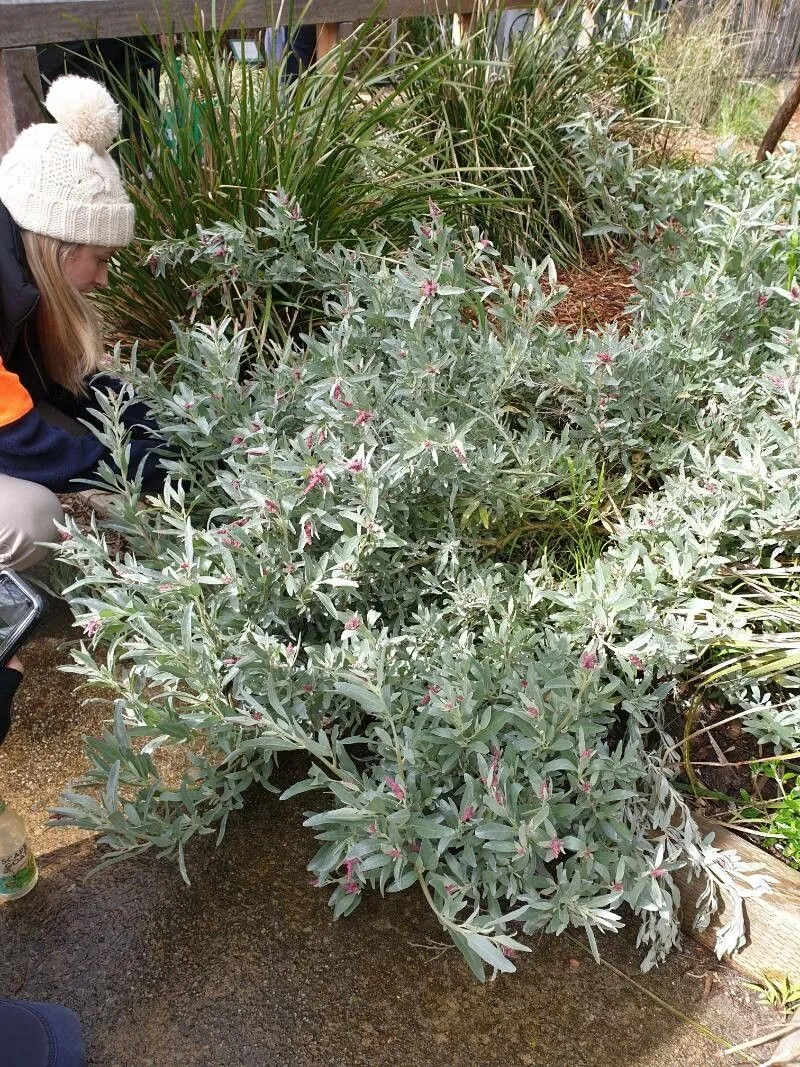
Author: Poir.
Bibliography: J.B.A.M.de Lamarck, Encycl., Suppl. 1: 471 (1811)
Year: 1811
Status: accepted
Rank: species
Genus: Atriplex
Vegetable: False
Observations: W. & S. Australia, Lord Howe I.
Grey saltbush, scientifically recognized as Atriplex cinerea, is a noteworthy plant species classified under the Amaranthaceae family. First described by Poir, and documented in the supplementary volume of the Encyclopédie Méthodique by J.B.A.M. de Lamarck in 1811, this resilient shrub has established itself across various regions in Australia and on Lord Howe Island.
Atriplex cinerea thrives particularly well in coastal and arid environments, showcasing its adaptability to saline and degraded soils. Its robust nature makes it a pivotal species in stabilizing sand dunes and providing ground cover, which is crucial in mitigating soil erosion—a common challenge in its native habitats. The plant is characteristically identified by its greyish foliage, a trait that not only reflects its common name, Grey saltbush, but also serves as a natural sun screen to conserve water in hot, dry conditions.
In Western and Southern Australia, Grey saltbush forms an integral part of the local ecosystem. It supports a range of fauna by offering shelter and a food source, especially valued for its dense, bushy growth that creates microhabitats for various small animals and insects. Apart from its ecological significance, Atriplex cinerea is also leveraged in land rehabilitation projects and as a forage plant for livestock due to its high nutritional value despite the challenging growing conditions.
Lord Howe Island, though geographically isolated, also hosts populations of this versatile plant, indicating its ability to colonize and flourish in a variety of landscapes. The plant’s presence on the island underscores its role in protecting and preserving delicate coastal and inland ecosystems from harsh, erosive elements.
Grey saltbush, with its enduring and widespread nature, not only exemplifies botanical resilience but also signifies the profound interconnectedness of flora and environmental health. Therefore, Atriplex cinerea stands out as a key species that not only enriches biodiversity but also fortifies ecological sustainability.
Eng: coast saltbush, gray saltbush, grey saltbush
En: Grey saltbush, Coast saltbush, Gray saltbush
Ar: أتريبلكس سينيريا القطف السنجابية
Taken Aug 23, 2022 by Ben (cc-by-sa)
Taken Jul 5, 2022 by Dawn Hendrick (cc-by-sa)
Taken Aug 16, 2020 by Lucas Pardo (cc-by-sa)
© copyright of the Board of Trustees of the Royal Botanic Gardens, Kew.
Taken Aug 1, 2022 by peter grouios (cc-by-sa)
Taken Aug 23, 2022 by Ben (cc-by-sa)
Taken Aug 23, 2022 by Ben (cc-by-sa)
Family: Myrtaceae Author: (F.Muell.) K.D.Hill & L.A.S.Johnson Bibliography: Telopea 6: 402 (1995) Year: 1995 Status:…
Family: Rubiaceae Author: Pierre ex A.Froehner Bibliography: Notizbl. Bot. Gart. Berlin-Dahlem 1: 237 (1897) Year:…
Family: Sapindaceae Author: Koidz. Bibliography: J. Coll. Sci. Imp. Univ. Tokyo 32(1): 38 (1911) Year:…
Family: Asteraceae Author: A.Gray Bibliography: Pacif. Railr. Rep.: 107 (1857) Year: 1857 Status: accepted Rank:…
Family: Fabaceae Author: Medik. Bibliography: Vorles. Churpfälz. Phys.-Ökon. Ges. 2: 398 (1787) Year: 1787 Status:…
Family: Aspleniaceae Author: (Cav.) Alston Bibliography: Bull. Misc. Inform. Kew 1932: 309 (1932) Year: 1932…